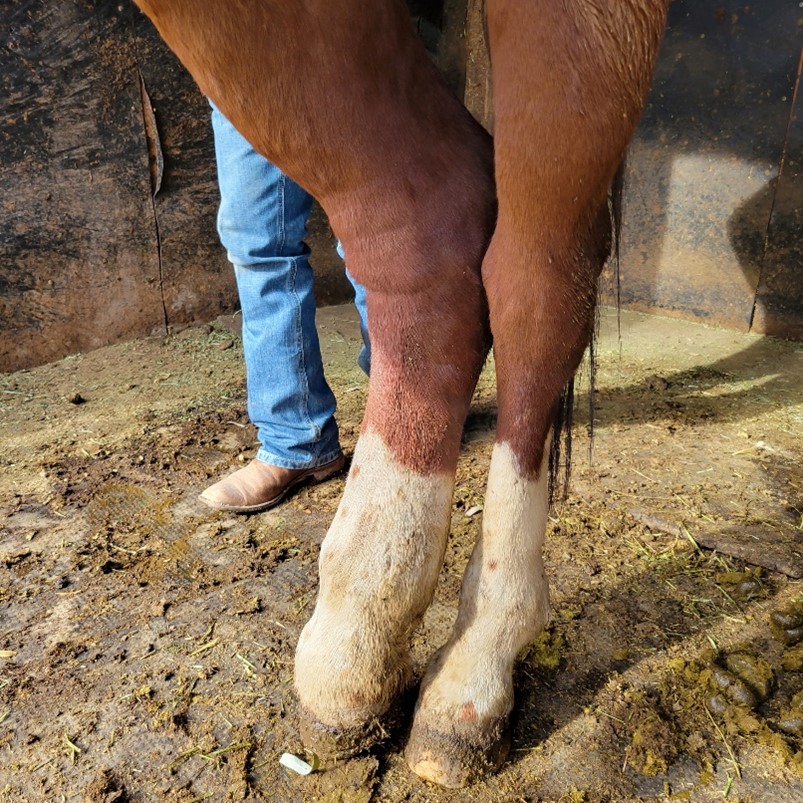Last night when you fed your horse you didn’t notice any issues as you performed your quick “once over” before rushing back out the barn door. But this morning they have a severely swollen leg, and they are hobbling around.
What happened?
The list of possibilities isn’t terribly long, but there are serious things on it: fractures, hoof abscesses, laminitis, joint infections, and cellulitis. Of course, fracture is the one that no one wants to hear and has significant ramifications. Laminitis and abscesses typically don’t have the significant swelling described in the “case” above. Joint infections would likely have been associated with trauma or a recent joint injection, and the swelling would likely be associated with a particular joint, not the entire leg. That leaves this horse with a likely case of cellulitis.
If you haven’t ever seen a case, they can be impressively swollen, and this can happen relatively quickly (overnight)! See below for an example.

What is cellulitis
Cellulitis is an infection of the deeper layers of the skin and the subcutaneous spaces. The pressure and inflammation make it extremely uncomfortable for the horse. They are usually very painful to the touch (maybe not everywhere they are swollen, but some portion of the swelling), and there is a lot of heat. Severe cases can have serum oozing from the skin. The horse may have a mild to moderate fever as well.
What causes cellulitis?
The infection can initiate from an obvious recent wound, bed sore, “scratches”, or other minor scrapes. It could also be a result of a more significant laceration from days before that seemed to be healing in the right direction. Another common route that these can begin is secondary to a hoof abscess. The infection begins in the hoof and then in the right set of circumstances, manages to take hold and cause further infection higher up the leg.
How is cellulitis treated?
If you notice the swelling before it is as extreme as the picture above, getting medical attention could prevent it from becoming such an advanced case. Medical attention usually consists of antibiotics and anti-inflammatories systemically. On occasion, a “regional limb perfusion (RLP)” may be justified. An RLP is a way for the veterinarian to get very high concentrations of antibiotics to the area of concern using a tourniquet and antibiotics directly infused into the affected limb. Hydrotherapy (cold hosing) is also often indicated.
Managing cases of cellulitis early is paramount to preventing long term ramifications such as lymph damage (lymphangitis), or laminitis. Lymphangitis is an inflammatory process in the normal lymph drainage of the limb, and can leave the limb permanently swollen. If there is enough swelling in the leg during the cellulitic process, it could cause enough vascular alterations to damage the laminae of the foot, causing laminitis.
If you find your horse with a sudden non-weight bearing lameness (or barely weight bearing), we would always tell you that it is justification for a phone call to your veterinarian, and most likely a visit.



